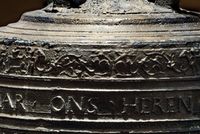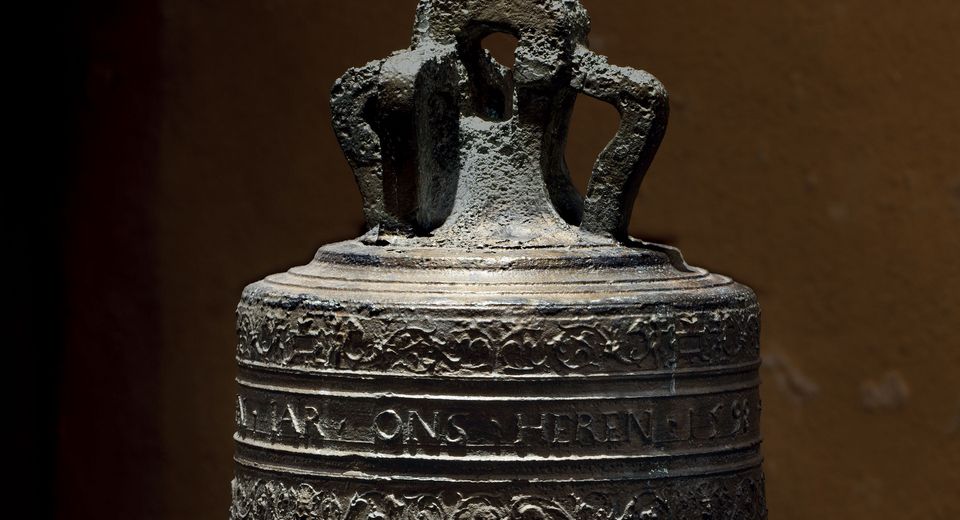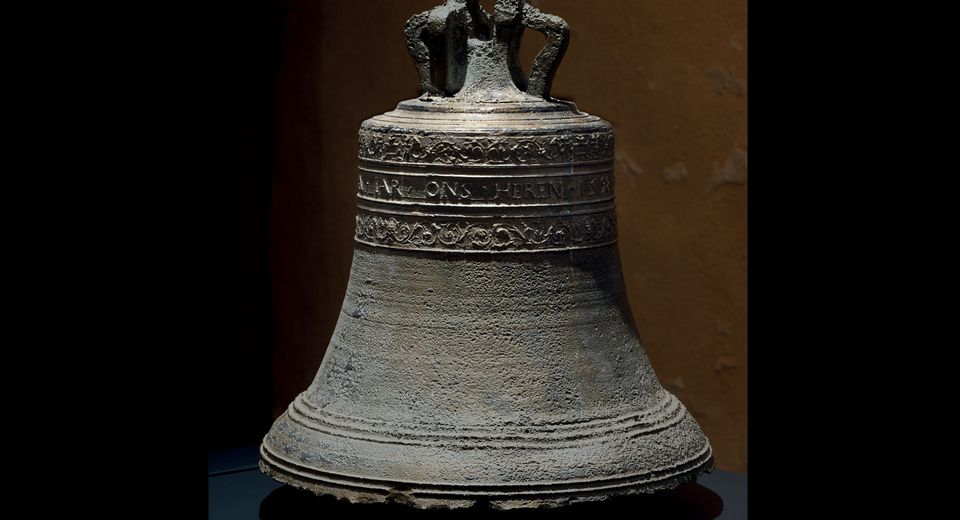The Mauritius’ Bell
Port-Louis
This bell is part of the wreck of the Mauritius, a Dutch merchant ship stranded near Gabon.
The wreck of the Mauritius
In 1609, the Mauritius, a ship belonging to the Dutch East India Company, the first major commercial shipping concern, ran aground off Cape Lopez in Gabon. The Cape was an essential stopover for ships returning from the Indies, in order to stock up on water and food.
The forty-metre three-master was built in Amsterdam circa 1601 and, after the disaster, much of its cargo was brought back to Holland by the sailors who had survived the shipwreck.
The wreck, which was discovered during an oil exploration operation, lay a dozen metres deep, its remains buried under a mound of zinc ingots.
In addition to the cannons, deck fittings and everyday items, the 1986 excavation uncovered almost 140 tonnes of pepper in sacks, which, along with the zinc, accounted for most of the ship’s cargo. The sherds of blue and white porcelain found were few in number, suggesting that the artefacts had been brought back from China as samples.
The discovery of the Mauritius’ bell
 Enlarge image : cloche_mauritius_detail_inscription.jpg
Enlarge image : cloche_mauritius_detail_inscription.jpg
It was the discovery of the Mauritius’ bell in 1985 that enabled location of the wreck. It is a large bronze bell weighing 41 kg; it has been subjected to lengthy treatment by electrolysis in order to ensure its preservation. The crown-shaped attachments on top of the bell enabled it to be hung up. Some of them have purposely been sawn through. The bell’s shoulder is richly decorated with friezes of foliage alternating with cherubs and gorgons’ masks, while its lip is simply embellished with a few mouldings.
The item’s interest lies in the circular inscription providing us with the name of its bell founder. It reads WILLEM. TONNISEN. GOET. MI. IN. IAR. ONS. HEREN. 1598, which translates as “Willem Tonnisen cast me in the Year of Our Lord 1598”.
Willem Tonnisen (literally Willem son of Thonis) was a member of one of Holland’s two greatest families of casters in the 16th and early 17th centuries. His brother, Conrad Anthonisz, was responsible for the magnificent cannon bearing Delft’s coat of arms, also on exhibition at the Museum in Port-Louis.
Collection highlight
The essential works to see during your visit to the Musée national de la Marine in Brest, Port-Louis, Rochefort, Toulon, and soon in Paris.


